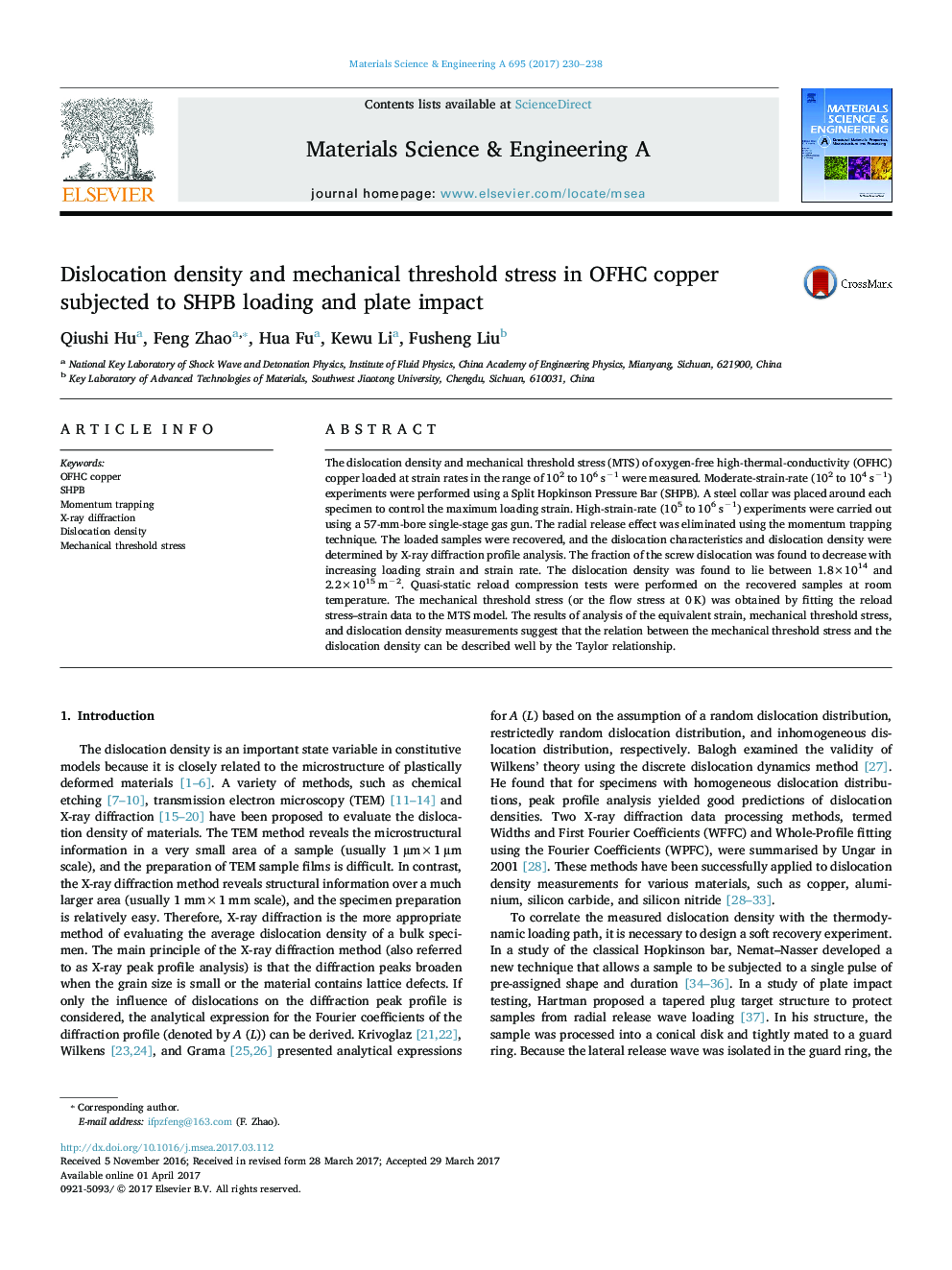| Article ID | Journal | Published Year | Pages | File Type |
|---|---|---|---|---|
| 5455718 | Materials Science and Engineering: A | 2017 | 9 Pages |
Abstract
The dislocation density and mechanical threshold stress (MTS) of oxygen-free high-thermal-conductivity (OFHC) copper loaded at strain rates in the range of 102 to 106Â sâ1 were measured. Moderate-strain-rate (102 to 104Â sâ1) experiments were performed using a Split Hopkinson Pressure Bar (SHPB). A steel collar was placed around each specimen to control the maximum loading strain. High-strain-rate (105 to 106Â sâ1) experiments were carried out using a 57-mm-bore single-stage gas gun. The radial release effect was eliminated using the momentum trapping technique. The loaded samples were recovered, and the dislocation characteristics and dislocation density were determined by X-ray diffraction profile analysis. The fraction of the screw dislocation was found to decrease with increasing loading strain and strain rate. The dislocation density was found to lie between 1.8Ã1014 and 2.2Ã1015Â mâ2. Quasi-static reload compression tests were performed on the recovered samples at room temperature. The mechanical threshold stress (or the flow stress at 0Â K) was obtained by fitting the reload stress-strain data to the MTS model. The results of analysis of the equivalent strain, mechanical threshold stress, and dislocation density measurements suggest that the relation between the mechanical threshold stress and the dislocation density can be described well by the Taylor relationship.
Related Topics
Physical Sciences and Engineering
Materials Science
Materials Science (General)
Authors
Qiushi Hu, Feng Zhao, Hua Fu, Kewu Li, Fusheng Liu,
